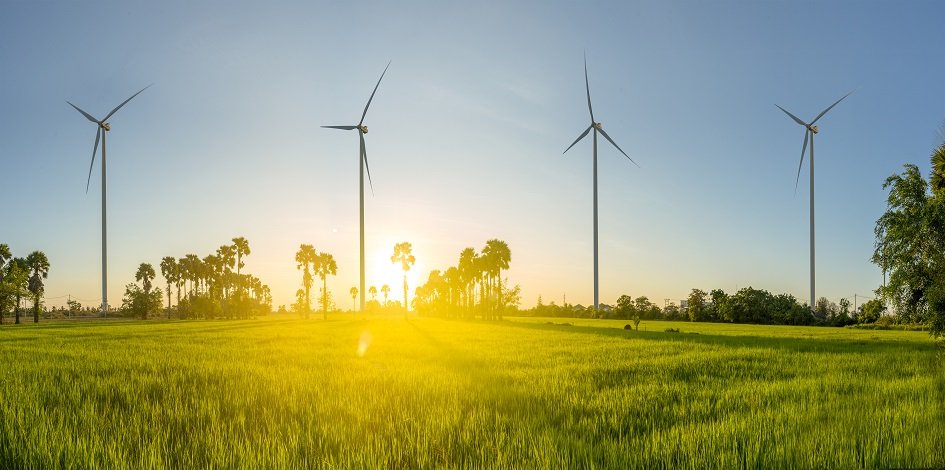After achieving remarkable gains in 2020, energy transition equities endured a more turbulent and challenging time in 2021. Shares within the sector struggled to achieve gains as supply chain pressures and higher inflation weakened profits from many companies in the sector and investors were less enthusiastic about the energy transition theme.
However, despite the uncertainties facing the market in 2022, we remain confident that investors can profit from the sector.
Underperformance opens up buying opportunities
Many companies operating across the low-carbon energy sector are firmly in the eye of the current storm with respect to the market pressures, which has, in many instances, led to share price weakness. As investors in the energy transition, we must always look at the ability of a company to return to levels of profitability achieved in less challenging times. However, it is also important to remember that the current supply chain and inflationary challenges are uniquely extreme. Although current supply chain bottlenecks and cost increases are hitting near-term demand and profitability, the long-term potential for these companies has not really changed.
More importantly, despite the current pressures, the long-term opportunity behind the energy transition remains unchanged. As long-term investors in the energy transition, using short-term disruption as an opportunity to buy is critical, especially given the theme’s growth potential.
Supply chain pressures easing in some areas
We have yet to see a significant easing of the supply chain problems or rising costs that dogged the market in 2021. Raw material and energy prices remain at, or close to, their recent highs, freight rates continue to extend, and lead times for key components such as semiconductors have been pushed out even further than before. In addition, we are also starting to see signs of wage inflation – adding another source of pressure on the profits of companies operating across the energy transition sector.
However, there are tentative signs of improvement in some areas. Steel prices in China and the US have started to fall from their peaks in September 2021 and in certain ports, the number of containers held at terminals is starting to fall. This should ultimately feed through to freight rates. Lorry driver numbers are also starting to recover and are now close to pre-pandemic levels. As Covid-19 restrictions continue to ease and existing capacity starts to return (assuming no more severe variants emerge), we should see further flexibility in supply chains appear. Additional bottlenecks caused by one-off events (such as the blockage of the Suez Canal in March 2021 and the numerous disruptive US storms) will continue to normalise as well.
Policy decisions will have a significant impact in 2022
Towards the end of 2021, delays, changes, and debates around energy-related policies caused significant uncertainty and disruption in the market. Most technologies across the energy transition sector no longer require policy support to be cost effective, but policy action can still cause significant demand adjustments depending on when and how they are implemented. This has been particularly the case for renewable energy projects in the US. Delays and debate around the signing of President Biden’s Build Back Better Act, which includes fresh tax credits that would be helpful for developers of future renewable projects, has led to a decline in orders for new projects. While these tax credits are not needed to support industry growth, developers are incentivised to wait to see if the benefits will be available before confirming the project starts.
A small slowdown in installations in utility-scale wind and solar this year following two years of extremely robust growth, before an acceleration again in 2023 and 2024, was already expected. However, current policy dynamics are making this short-term slowdown more pronounced. The decline in orders for wind equipment can be attributed to higher costs and supply chain pressures. However, the delay in the signing of the Biden bill is a significant reason for the pause.
Although the next Senate vote on the bill is due this year, the timing and final make-up of any signed-off legislation remain unclear. Getting clarity on progress here – and whether key energy transition-related provisions can ultimately get passed either within this or other legislation – could be critical to unlocking further industry demand and providing clarity on the earnings outlook for years to come.
Undimmed demand
Supply chain pressures and US policy uncertainty are clearly unhelpful for stimulating new order growth. However, the broader, underlying demand picture across the energy transition sector remains very strong, which is helping to offset these disruptions to a certain extent. We expect to see particularly strong growth in demand for batteries, an acceleration in hydrogen projects after a year of delays, and continued strength in solar, driven as much by smaller-scale applications as the larger utility projects that have dominated the market today.
Demand for electrical equipment and energy management should also remain robust – with most companies presenting solid market guidance for the next few years. Demand for electric vehicles should also continue to accelerate higher, with penetration rates in many countries (particularly in Europe) reaching almost 20% in the second half of 2021.




































